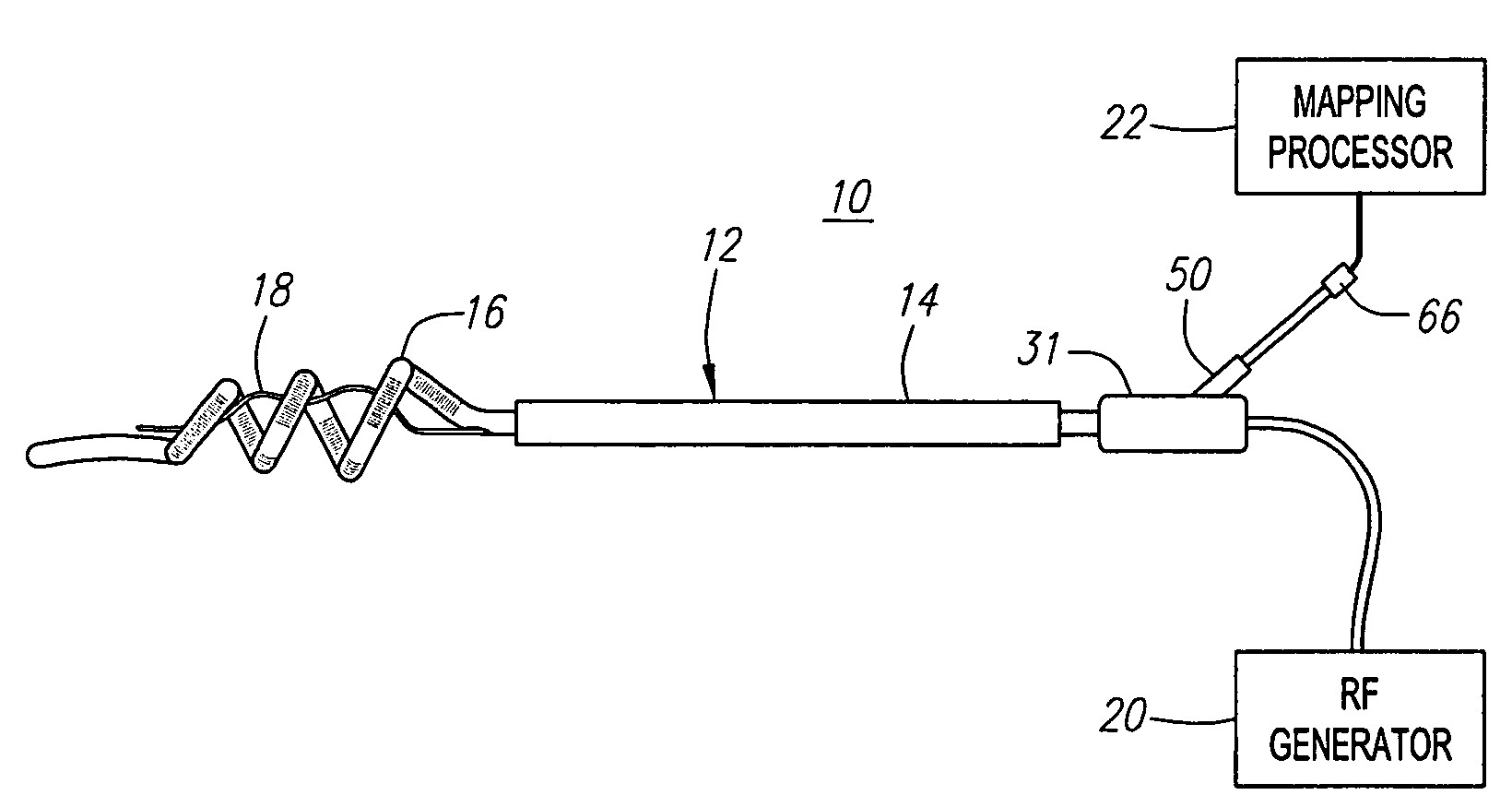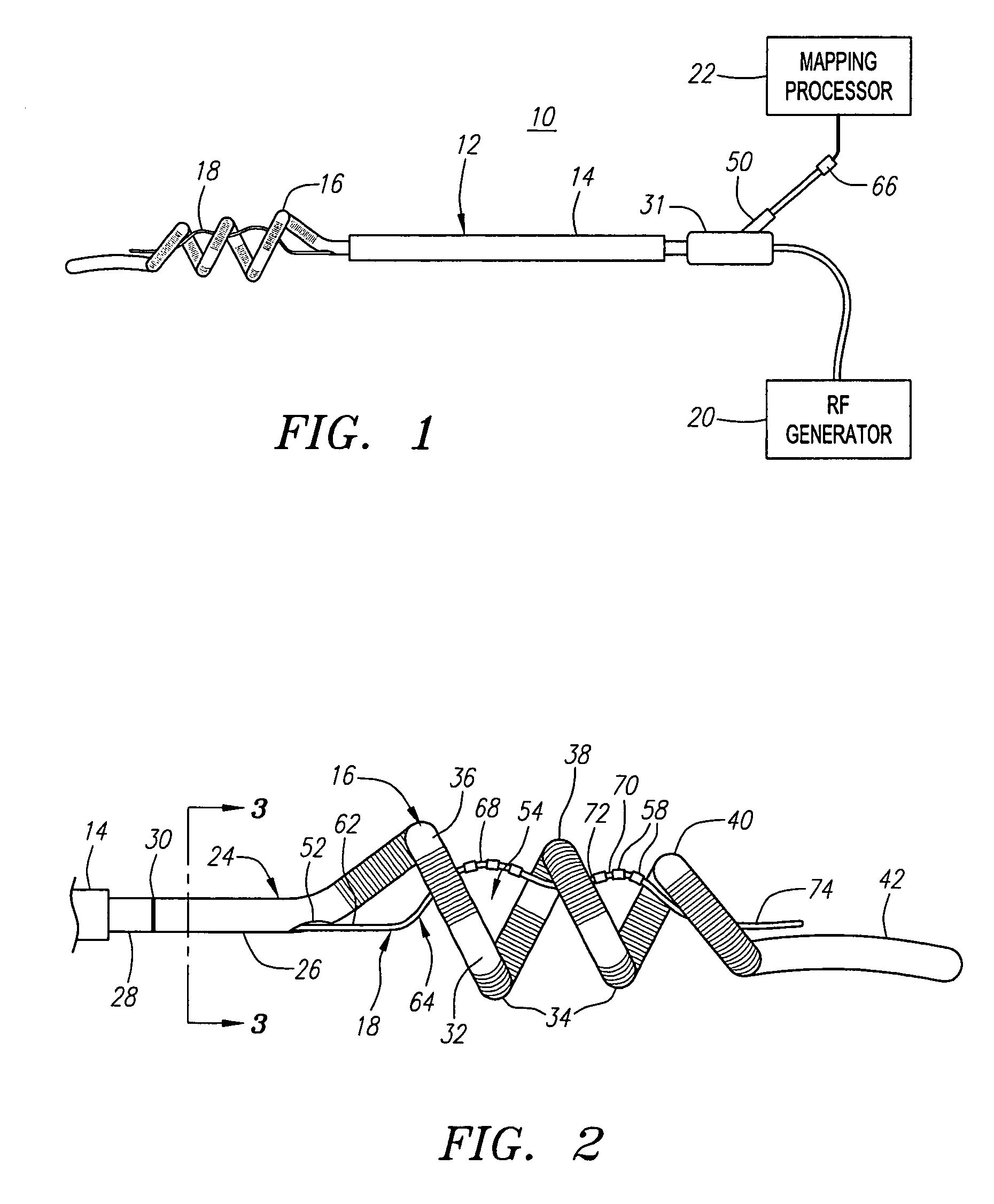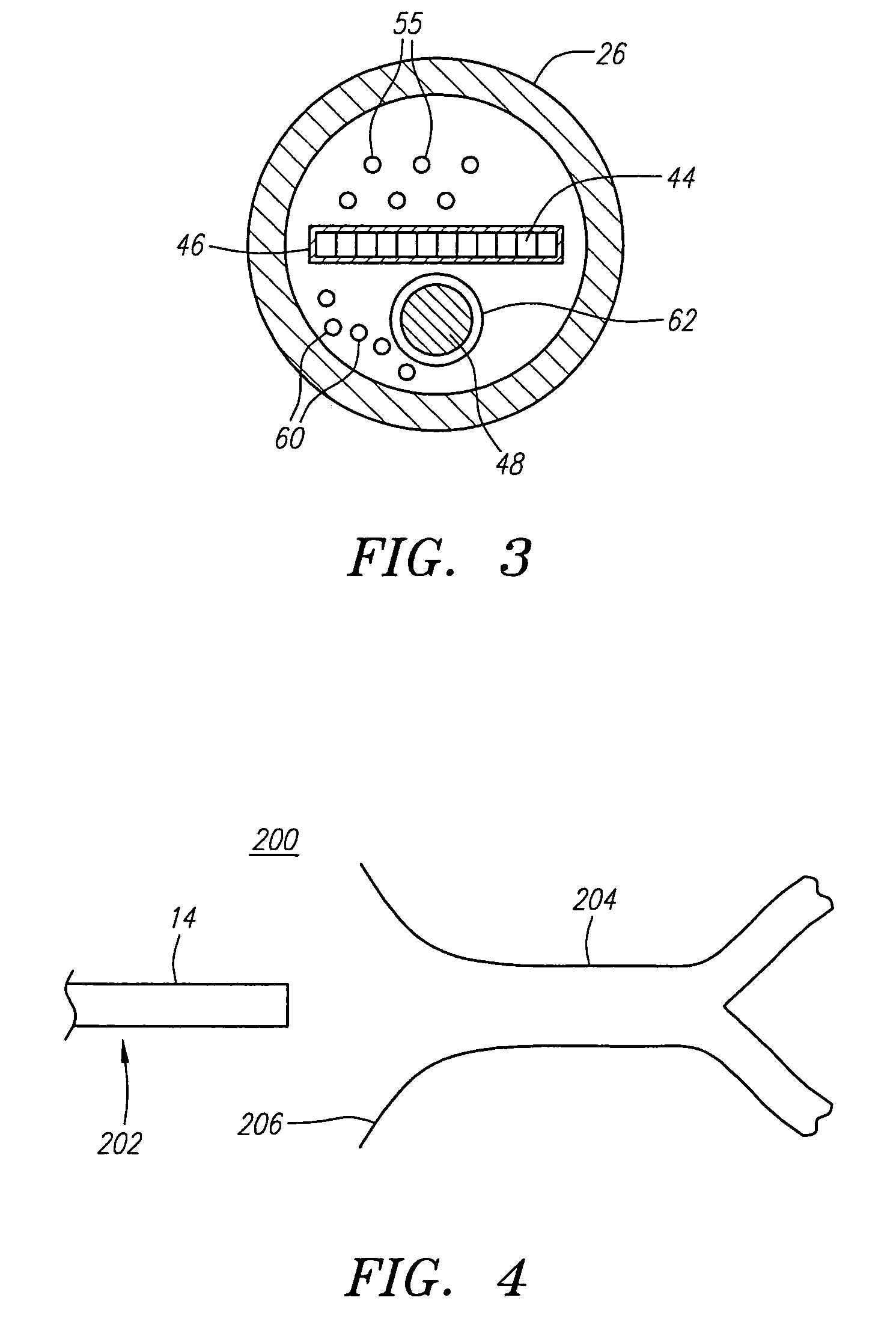Medical probes for creating and diagnosing circumferential lesions within or around the ostium of a vessel
a technology of circumferential lesions and medical probes, which is applied in the field of medical ablation and diagnostic systems and methods, can solve the problems of affecting the normal activation of the left and right atria, so as to achieve efficient and rapid ablation.
- Summary
- Abstract
- Description
- Claims
- Application Information
AI Technical Summary
Benefits of technology
Problems solved by technology
Method used
Image
Examples
Embodiment Construction
[0028]The embodiments disclosed herein may be used within body lumens, chambers or cavities for diagnostic or therapeutic purposes in those instances where access to interior bodily regions is obtained through, for example, the vascular system or alimentary canal and without complex invasive surgical procedures. For example, the embodiments herein have application in the diagnosis and treatment of arrhythmia conditions within the heart. The embodiments herein also have application in the diagnosis or treatment of ailments of the gastrointestinal tract, prostrate, brain, gall bladder, uterus, and other regions of the body.
[0029]With regard to the treatment of conditions within the heart, the embodiments herein are designed to produce intimate tissue contact with target substrates associated with various arrhythmias, namely atrial fibrillation, atrial flutter, and ventricular tachycardia. For example, the distal portion of a catheter used in the embodiments herein can be used to creat...
PUM
 Login to View More
Login to View More Abstract
Description
Claims
Application Information
 Login to View More
Login to View More - R&D
- Intellectual Property
- Life Sciences
- Materials
- Tech Scout
- Unparalleled Data Quality
- Higher Quality Content
- 60% Fewer Hallucinations
Browse by: Latest US Patents, China's latest patents, Technical Efficacy Thesaurus, Application Domain, Technology Topic, Popular Technical Reports.
© 2025 PatSnap. All rights reserved.Legal|Privacy policy|Modern Slavery Act Transparency Statement|Sitemap|About US| Contact US: help@patsnap.com



